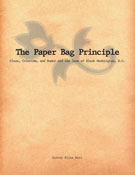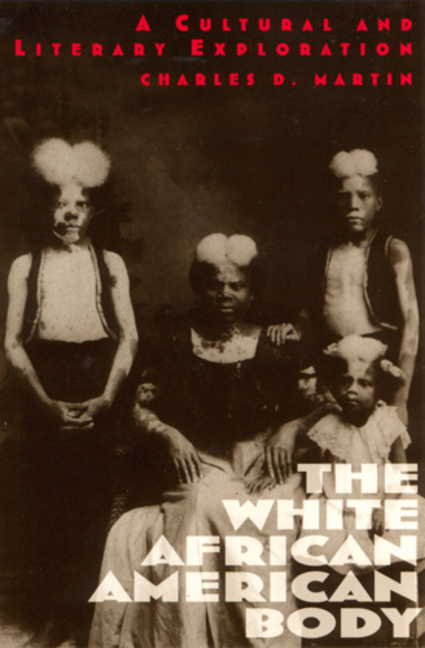Staunton Spectator
Staunton Virginia
1867-12-10
Column 1
Source: Valley of the Shadow: Civil War Era Newspapers, University of Virginia Library
A full transcript of President Johnson’s recent address to both houses of Congress, in which he argues that the most pressing danger facing the nation is the attempt “to Africanize the half of our country.”.
President Andrew Johnson
Washington, December 3, 1867
The continued disorganization of the Union, to which the President has so often called the attention of Congress, is yet a subject of profound and patriotic concern.-We may, however,, find some relief from that anxiety in the reelection that the painful political situation, although before untried by ourselves, is not new in the experience of nations. Political science, perhaps as highly perfected in our own time and country as in any other, has not yet disclosed any means by which civil wars can be absolutely prevented. An enlightened nation, however, with a wise and beneficent Constitution of free government, may diminish their frequency and mitigate their severity by directing all its proceedings in accordance with its fundamental law.
When a civil war has been brought to a close, it is manifestly the first interest and duty of the State to repair the injuries which the war has inflicted, and to secure the benefit of the lessons it teaches as fully and as speedily as possible. This duty was, upon the termination of the rebellion, promptly accepted, both only by the Executive Department, but by the insurrectionary States themselves, and restoration, in the first moment of peace, was believed to be as easy and certain as it was indispensable. The expectations, however, then so reasonably and confidently entertained, were disappointed by legislation from which I felt constrained by my obligations to the Constitution, to withhold my assent.
It is therefore a source of profound regret that, in complying with the obligation imposed upon the President by the Constitution, to give the Congress from time to time information of the state of the Union, I am unable to communicate ahy definitive adjustment satisfactory to the American People, of the questions which, since the close of the rebellion, have agitated the public mind. On the contrary, candor compels me to declare that at this time there is no Union as our Fathers understood the term, and as they meant it to be understood by us. The Union which they established can exist only where all the States are represented in both Houses of Congress; where one State is as free as another to regulate its internal concerns according to its own will: and where the laws of the central Government, strictly confined to matters of national jurisdiction, apply with equal force to all the people of every section. That such is not the present “state of the Union” is a melancholy fact; and we all must acknowledge that the restoration of the States to their proper legal relations with the Federal Government and with one another according to the terms of the original compact, would be the greatest temporal blessing which God, in his kindest providence, could bestow upon this nation. It becomes our imperative duty to consider whether or not it is impossible to effect this most desirable consummation…
…The plan of putting the Southern States wholly, and the General Government partially, into the hands of negroes, is proposed at a time peculiarly unpropitious. The foundations of society have been broken up by civil war. Industry must be reorganized and justice re-established, public credit maintained, and order brought out of confusion. To accomplish these ends would require all the wisdom and virtue of the great men who formed our institutions originally. I confidently believe that their descendants will be equal to the arduous task before them, but it is worse than madness to expect that negroes will perform it for us. Certainly we ought not to ask their assistance until we despair of our competency.
The great difference between the two races in physical, mental, and moral characteristics will prevent an amalgamation or fusion of them together in one homogeneous mass. If the inferior obtains the ascendancy over the other, it will govern with reference, only to its own interests-for it will recognize no common interest-and create such a tyranny as this continent has never witnessed. Already the negroes are influenced by promises of confiscation and plunder. They are taught to regard as an enemy every white man who has any respect for the rights of his own race. If this continues, it must become worse and worse, until all order will be subverted, all industry cease, and the fertile fields of the South grow up into a wilderness. Of all the dangers which our nation has yet encountered, non are equal to those which must result from the success of the effort now making to Africanize the half of the country.
I would not put considerations of money in competition with justice and right. But the expenses incident to “reconstruction” under the system adopted by Congress aggravate what I regard as the intrinsic wrong of the measure itself. It has cost uncounted millions already, and if persisted in will add largely to the weight of taxation, already too oppressive to be borne without just complaint, and may finally reduce the Treasury of the nation to a condition of bankruptcy. We must not delude ourselves. It will require a strong standing army, and probably more than two hundred millions of dollars per annum, to maintain the supremacy of negro governments after they are established. The sum thus thrown away would, if properly used, form a sinking fund large enough to pay the whole national debt in less than fifteen years. It is vain to hope that negroes will maintain their ascendancy themselves. Without military power they are wholly incapable of holding in subjection the white people of the South…
Read the entire article here.

